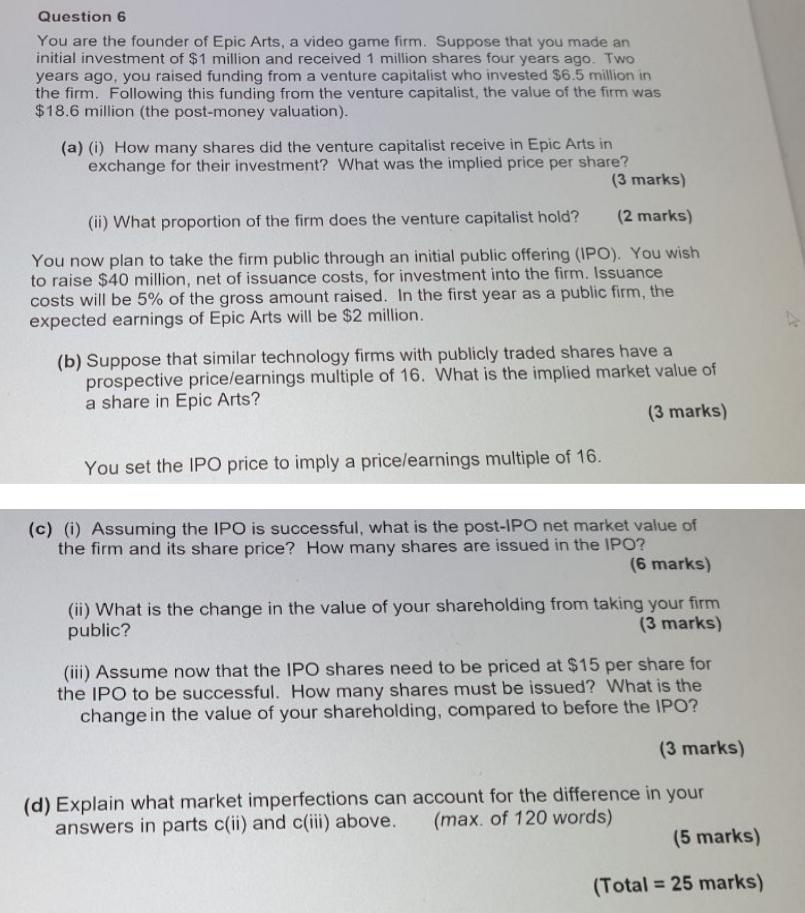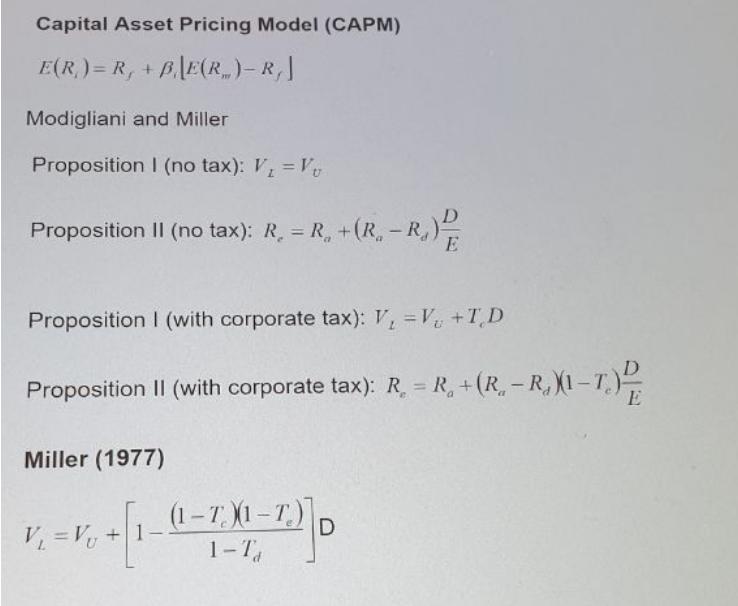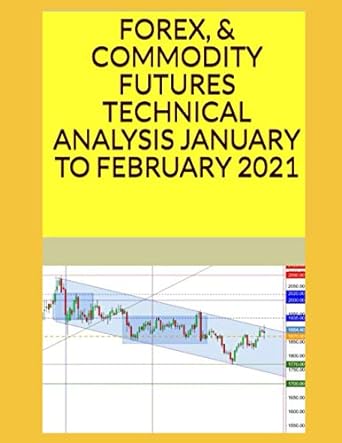Solve it correctly please. I will give 5 ratings.. thank you.
 formula
formula

Question 6 You are the founder of Epic Arts, a video game firm. Suppose that you made an initial investment of $1 million and received 1 million shares four years ago. Two years ago, you raised funding from a venture capitalist who invested $6.5 million in the firm. Following this funding from the venture capitalist, the value of the firm was $18.6 million (the post-money valuation). (a) (i) How many shares did the venture capitalist receive in Epic Arts in exchange for their investment? What was the implied price per share? (3 marks) (ii) What proportion of the firm does the venture capitalist hold? (2 marks) You now plan to take the firm public through an initial public offering (IPO). You wish to raise $40 million, net of issuance costs, for investment into the firm. Issuance costs will be 5% of the gross amount raised. In the first year as a public firm, the expected earnings of Epic Arts will be $2 million. (b) Suppose that similar technology firms with publicly traded shares have a prospective price/earnings multiple of 16. What is the implied market value of a share in Epic Arts? (3 marks) You set the IPO price to imply a pricelearnings multiple of 16. (c) (i) Assuming the IPO is successful, what is the post-IPO net market value of the firm and its share price? How many shares are issued in the IPO? (6 marks) (ii) What is the change in the value of your shareholding from taking your firm public? (3 marks) (iii) Assume now that the IPO shares need to be priced at $15 per share for the IPO to be successful. How many shares must be issued? What is the change in the value of your shareholding, compared to before the IPO? (3 marks) (d) Explain what market imperfections can account for the difference in your answers in parts c(ii) and (iii) above. (max. of 120 words) (5 marks) (Total = 25 marks) Capital Asset Pricing Model (CAPM) E(R)=R, +[E(R)-R] Modigliani and Miller Proposition 1 (no tax): V = V Proposition 11 (no tax): R = R +(R. - R.) Proposition 1 (with corporate tax): V, =V+TD Proposition II (with corporate tax): R = R. + (R. - R, XI-) (: R E Miller (1977) . V = V0 + v. +[1-0-10)) (1 - 1)(1-1)]. T, D
 formula
formula






